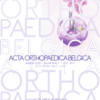Treatment of open tibia fractures in Sub-Saharan African countries : a systematic review
Africa ; cast immobilization ; developing countries ; open fracture ; tibia
Published online: Jun 15 2021
Abstract
Open tibia fracture (OTF) treatment is well documented in developed countries. Yet, this fracture pattern remains challenging because it is associated with an increased risk of infection and delayed union, particularly in case of Gustilo III B and C open fractures. Since access to healthcare is limited in Sub- Saharan African countries, this paper explores the results of OTF management in this setting.
A systematic review of the literature was conducted using current databases such as MEDLINE, Cochrane, EMBASE, PubMed, ScienceDirect, Scopus, and Google Scholar in order to identify prospective studies with cohorts of patients treated for OTF. Studies were included based on predefined inclusion and exclusion criteria. The quality of studies was analyzed by the Coleman Methodology Score (CMS).
Eight papers met the inclusion criteria and had an average CMS of 70 (range 54-73). The most common treatment was non-operative management of the fracture with cast immobilization (67%). Gustilo Type II and III fractures were associated with a higher risk of complications. The infection rate was 30%. Malunion, chronic osteomyelitis and nonunion were observed in 14.5%, 12.3%, and 7% of the cases, respectively. More complications were observed with non-operative treatment (cast immobilization) than with surgical fixation.
Although the surgical environment does not allow for internal fixation, poor results of non-operative management of open fractures should lead to the introduction of trainings on the proper use of external fixators. It is also advisable to support the development of locally produced external devices that utilize local source materials, which would make external fixation available at a reasonable cost.
